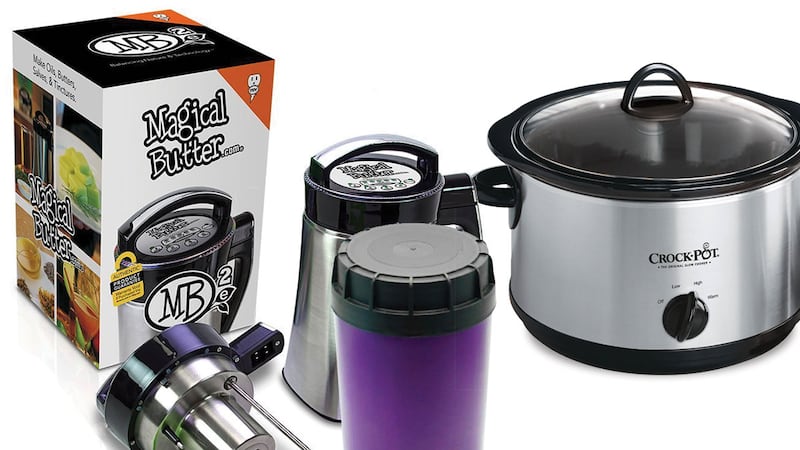About a year ago, I made my first attempt at homespun cannacaps.
Using a decarboxylator, I converted a half-ounce of mixed flowers into an edible powder, which I packed into gel caps and began trial testing. The first night I took them, the little caps conjured full-blown auditory hallucinations and an irreversible sense of panic. Having weathered numerous psychedelic challenges, I knew it would pass—I held my breath and fought through the nightmare edibles experience, swearing that I'd solve the equation and develop manageable, anxiety-free cannacaps.
The first hurdle was to ensure an even dosage throughout each capsule—a chemistry challenge that's easily solved using infusion methodology, thus spreading out the psychoactive impact over an easy-to-measure-and-dose liquid.
Once I arrived at a viable infusion method, I found that for a social, upbeat and never-scary high, a ratio of CBD to THC close to 1 to 1 was ideal. In tandem, these cannabinoids team up to even out each other's less-desirable characteristics—the THC's trippy tones are sanded down by the CBD, and the CBD's sedate effects are re-energized by the THC. A 1-to-1 ratio offers an even-keel, everyday high.
I found that if I wanted a trippier experience, a 3-to-1 THC-to-CBD ratio is a safe bet. Meanwhile, a reliable, refreshing night's sleep can be achieved by a 4-to-1 CBD-to-THC ratio.
Using budget flowers and basic supplies available at the grocery store I could create doses that were far cheaper than the most wallet-friendly store-bought edibles. Additionally, when I decided I wanted to give homemade topicals a try, I discovered the recipe I was using actually doubles as a salve, no tweaks necessary. In other words, this is the last infusion recipe you'll ever need.
Recommended tools
Ingredients
- 1 ounce (28 grams) decarboxylated
cannabis flower - 4 cups (960 ml) liquefied coconut oil
- ¼ cup (60 ml) powdered sunflower lecithin
Notes on decarboxylation
Decarboxylation is the process of applying controlled heat to raw cannabis to convert native cannabinoids to their bioavailable states. We recommend decarboxylating your flower using Ardent Cannabis' Nova Decarboxylator.
Instructions (MagicalButter machine)
In the machine, combine liquefied coconut oil and powdered sunflower lecithin and stir to mix smooth. Once the lecithin has dissolved into the coconut oil, add your whole, unground, decarboxylated cannabis flower. Secure the top of the device into the mixing chamber. Set the machine to 160 F and select the 2-hour heating cycle. Once the cycle is complete, separate the spent herb from the infusion using the mesh bag included with the machine. To ensure the longest possible shelf life, store your finished infusion in a cool, dark place.
Instructions (Crock-Pot or slow cooker)
If you make edibles, tinctures or salves on a regular basis, the MagicalButter machine is an investment I can't recommend enough. But if you're a first-timer and don't want to sink the cash in one quite yet, you can manage an actionable infusion using a Crock-Pot or slow cooker instead of the MBM. When using a Crock-Pot, you'll need to grind your flower ahead of time. After making a fine chaff of your decarbed weed, combine your liquefied coconut oil and powdered sunflower lecithin. Stir until the powder dissolves. Next, add your ground, decarboxylated flower to the oil-lecithin mixture. Turn on your Crock-Pot and monitor the temperature with a meat thermometer. Stir occasionally and, after 2 hours at 160 F, strain out the plant material using cheesecloth or an extraction mesh.
